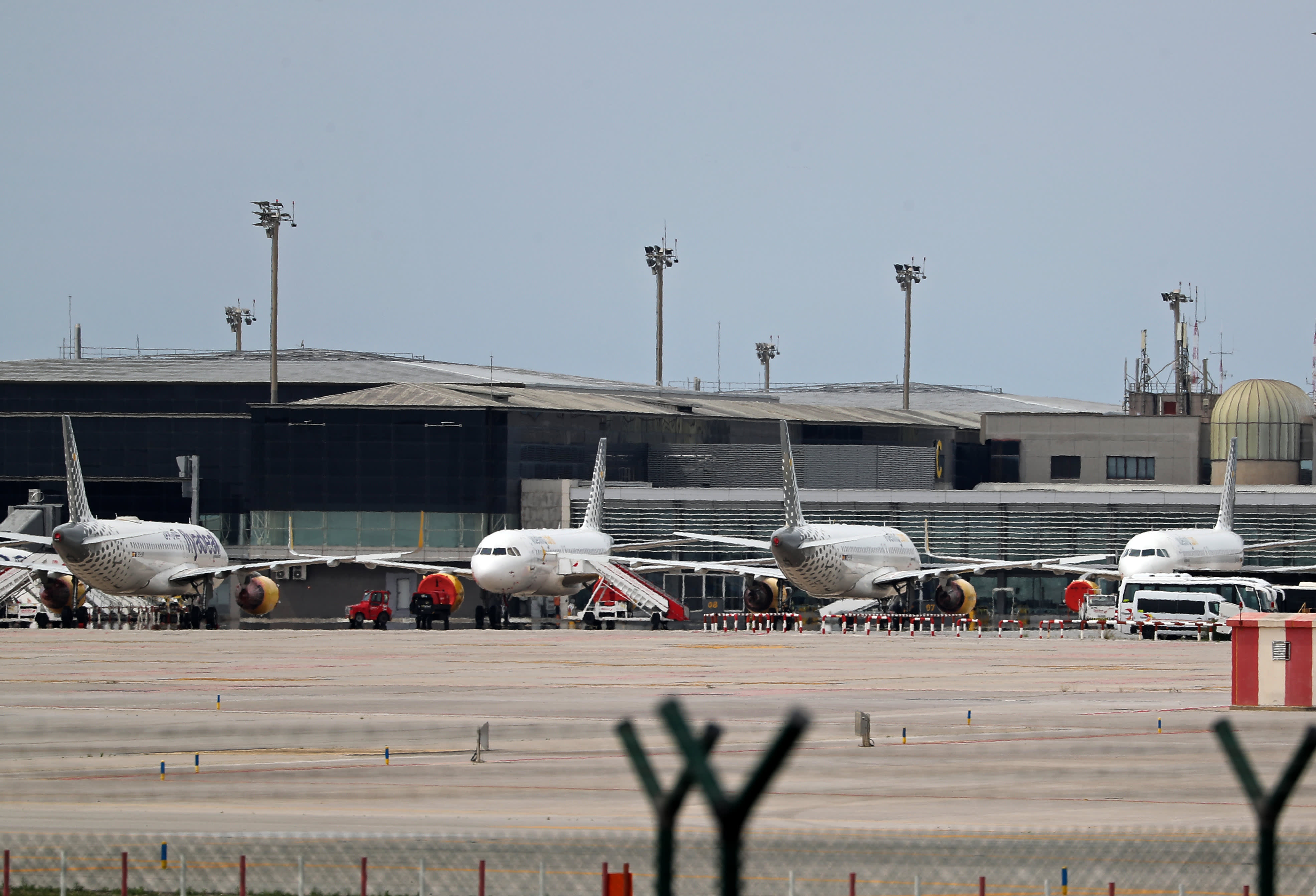Planes parked at the Barcelona airport terminal, on 12th May 2020. (Photo by
Joan Valls | Urbanandsport | NurPhoto via Getty Images
Large, state-backed airlines have a better chance of making it through the coronavirus pandemic — but second-tier players “could be in trouble,” according to Greg Waldron from aviation publication, FlightGlobal.
In a bid to stem the coronavirus outbreak, countries across the globe have imposed lockdowns and travel bans for weeks and months. That has brought the aviation industry to its knees, as global demand for air travel halts.
“You’ve seen air travel collapse about 98, 99% globally and it’s a dire situation so (the airlines) really are in survival mode,” said Waldron, Asia Managing Editor at FlightGlobal, on Thursday.
The International Air Transport Association (IATA) predicts that long-haul air travel will only return to 2019 levels in 2024. That’s “quite a long time,” Waldron said, adding that the airlines with cash and fundraising ability would be the ones to weather the current crisis.
Given that Chinese airlines have come through “fairly well” so far, without a great dent in their share price, the other big state-backed carriers around the region “should do okay” with government support, Waldron told CNBC’s “Street Signs Asia.”
That’s because governments understand how critical airlines and airports are to tourism and economic growth, he added.
However, second-tier airlines in developing nations like Thailand, Vietnam, India that have no government support could find themselves in trouble, said Waldron.
Smaller airlines that lack the “great credit that the big blue-chip carriers might have,” as well as the carriers with a lot of debt, would be at risk too, he said.
Waldron said he expects to see some consolidation among second- and third-tier players in the industry. Top players in various countries could acquire some of these more “vulnerable” airlines, he added, without giving specific names of carriers.
In the lead-up to recovery in the sector, airlines could preserve savings by looking at their fixed costs, putting staff on unpaid leave, furloughing staff, grounding and storing aircraft, talking to their lessors about deferrals, as well as speaking to airports about fee reductions, Waldron said.
Over in the U.S., the top three carriers — United Airlines, Delta Airlines and American Airlines — would be in a “great position” going forward with several years of profits. Second-tier players there may also likely “struggle through,” but there’s a need to wait and see, he said.
